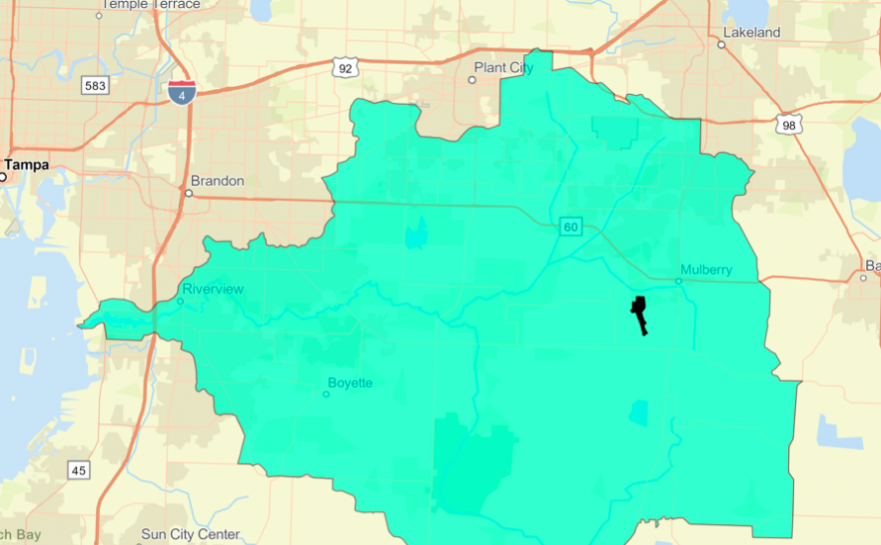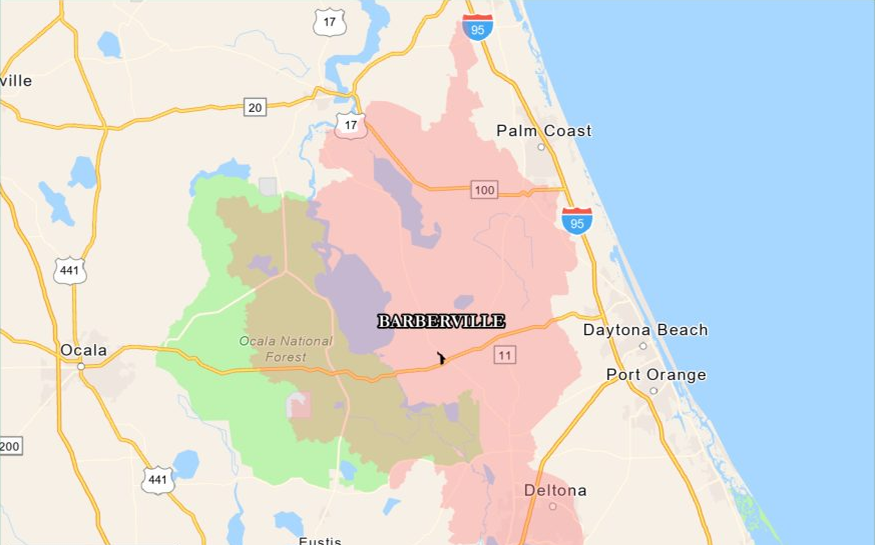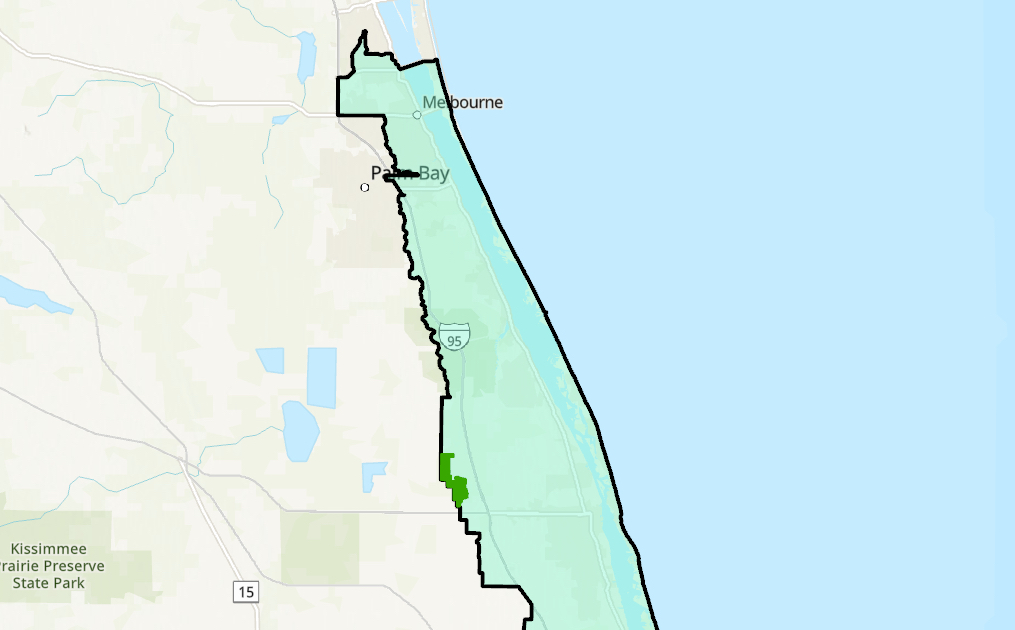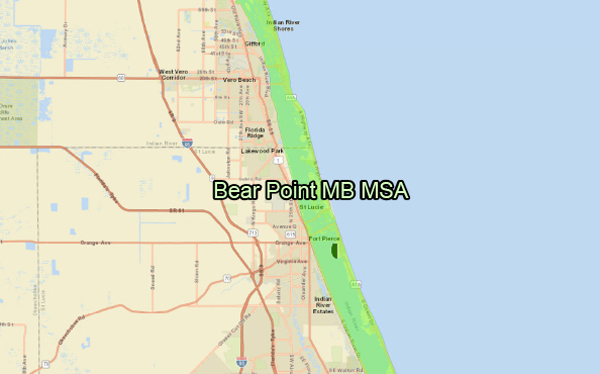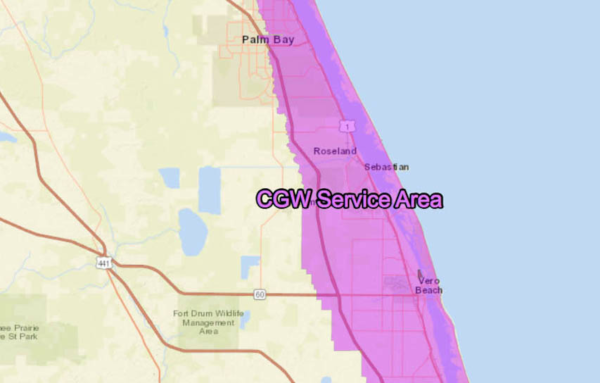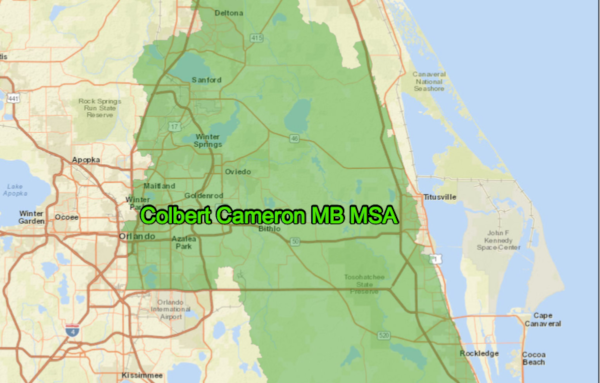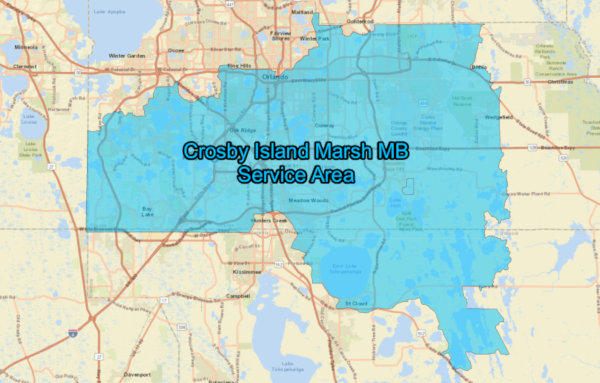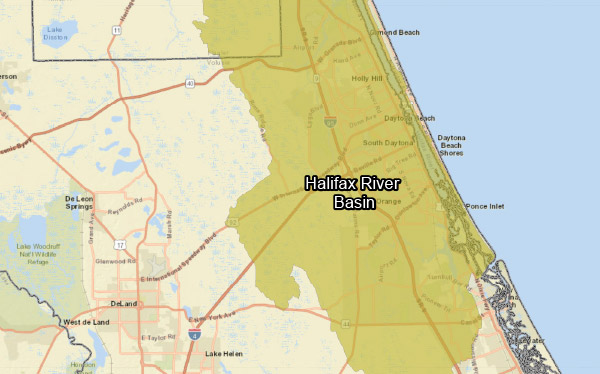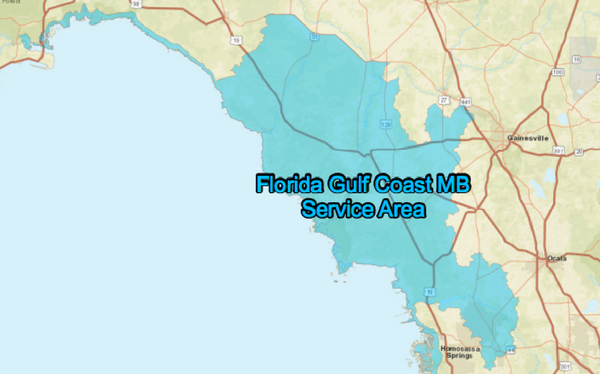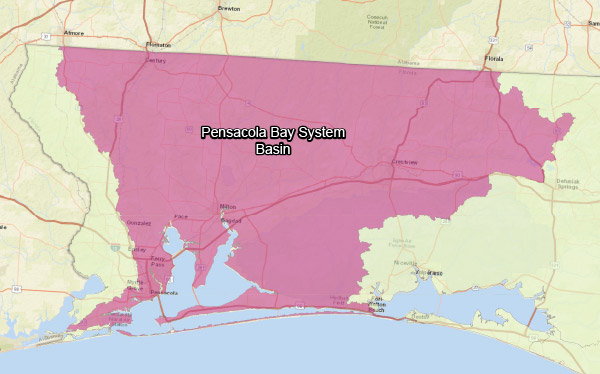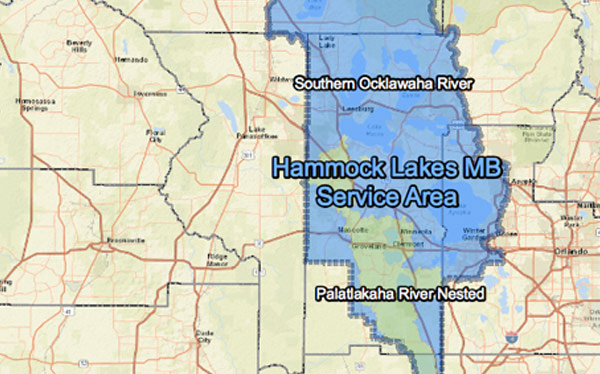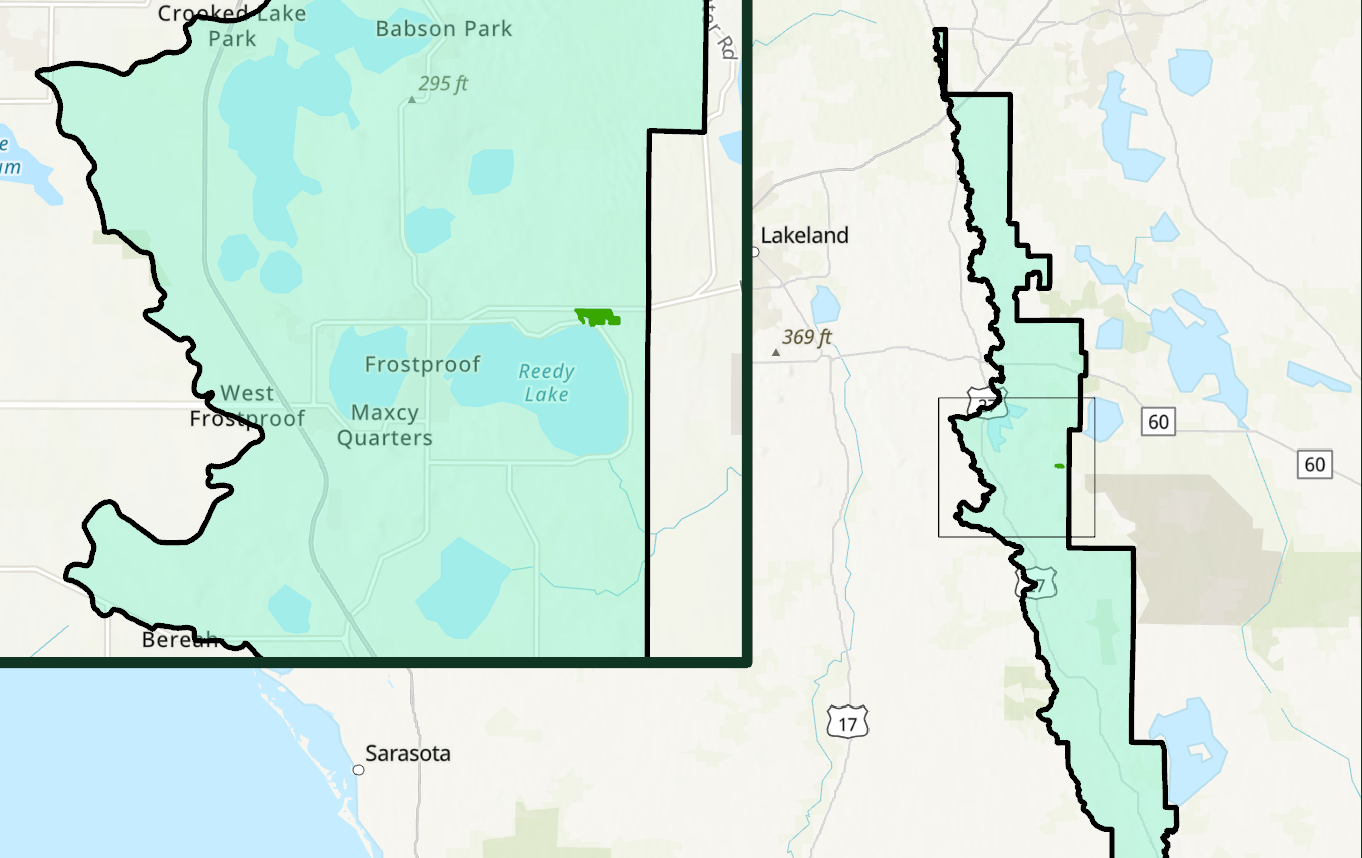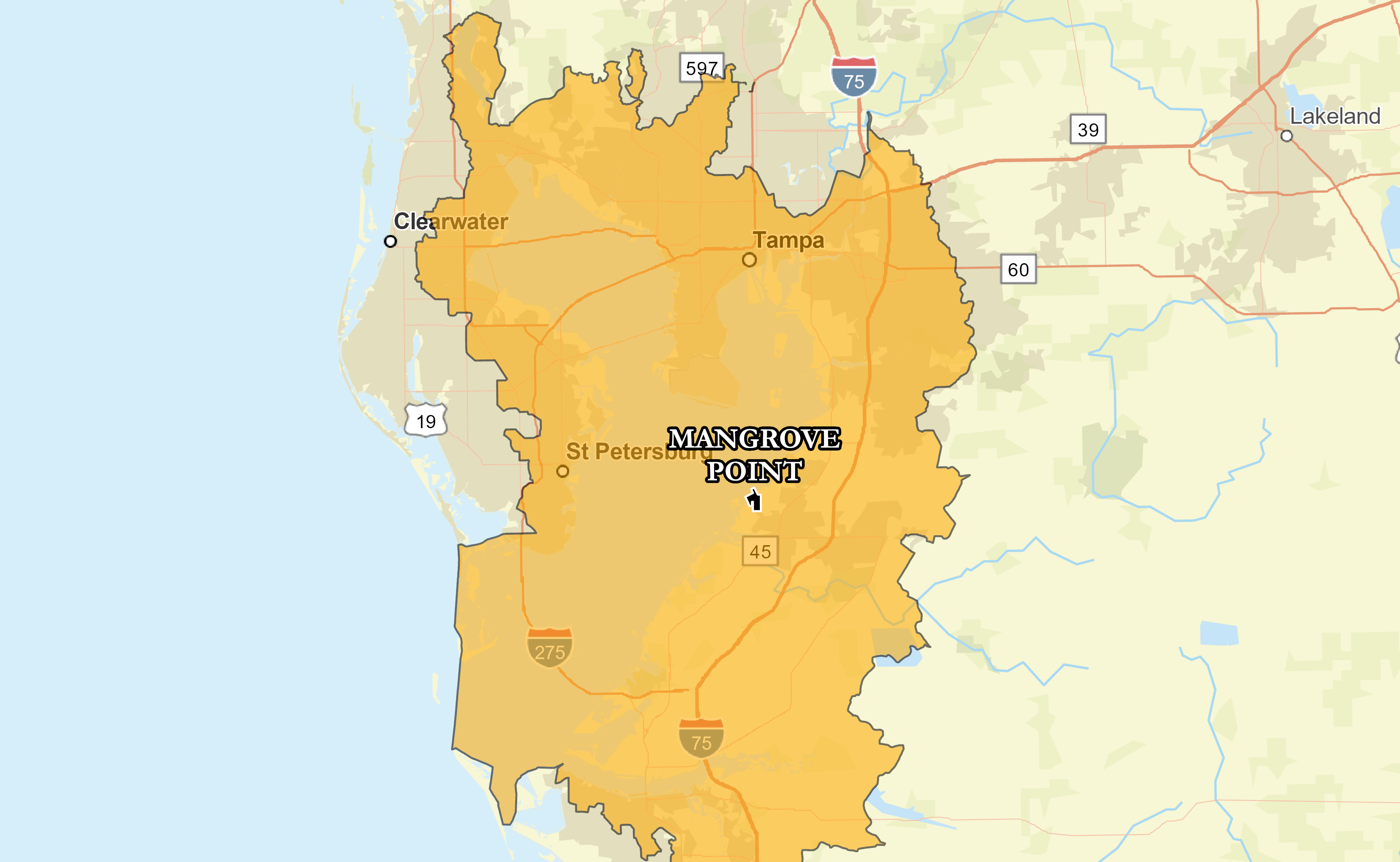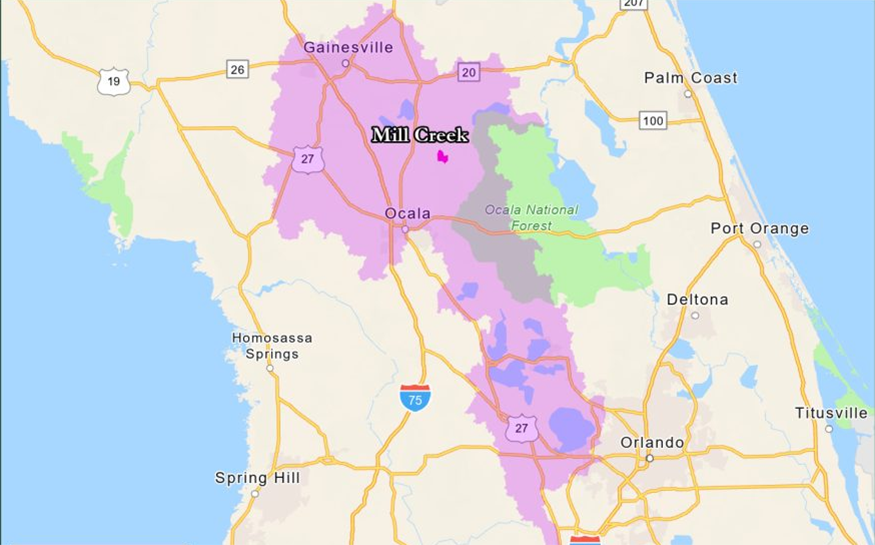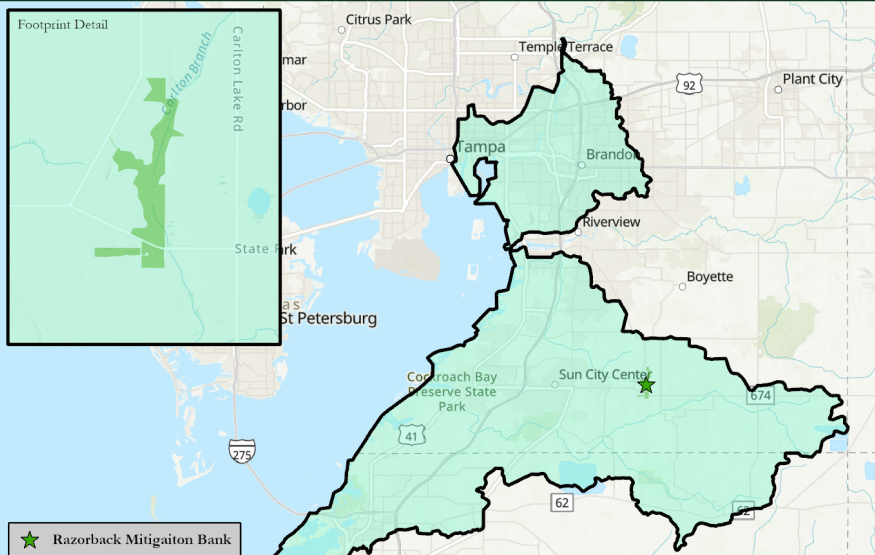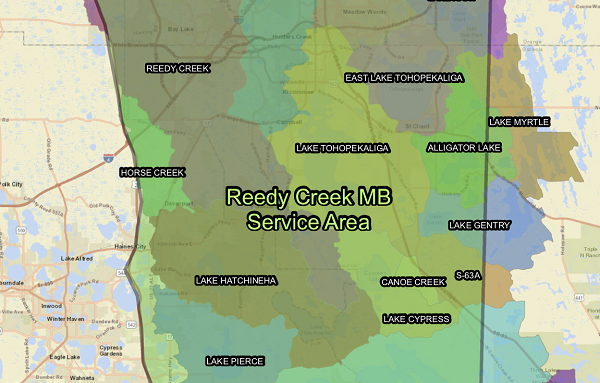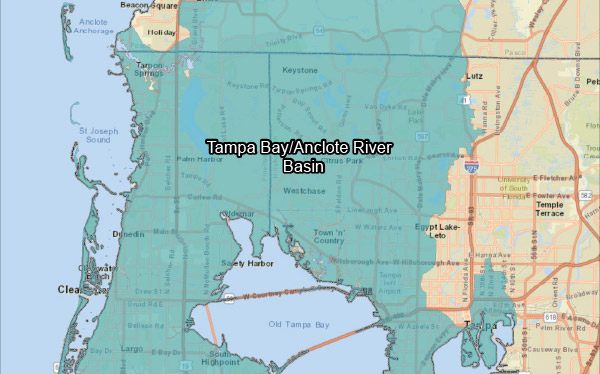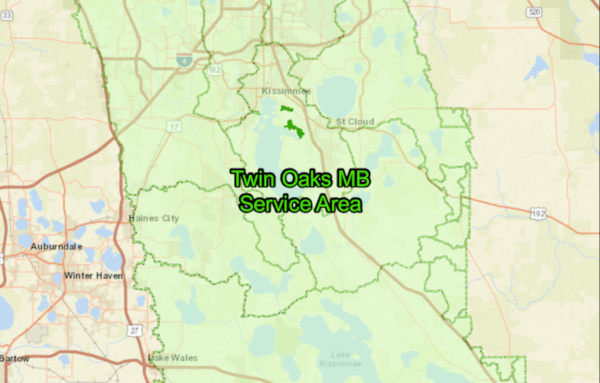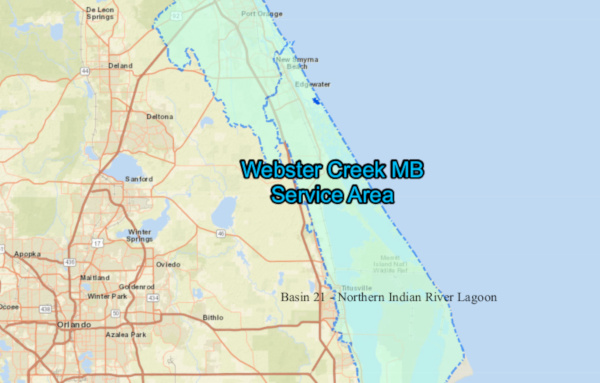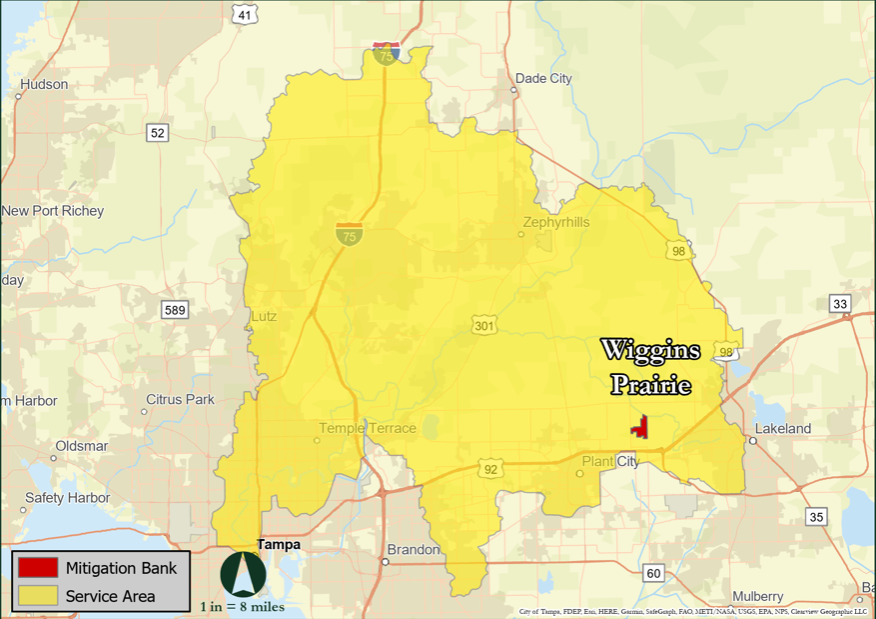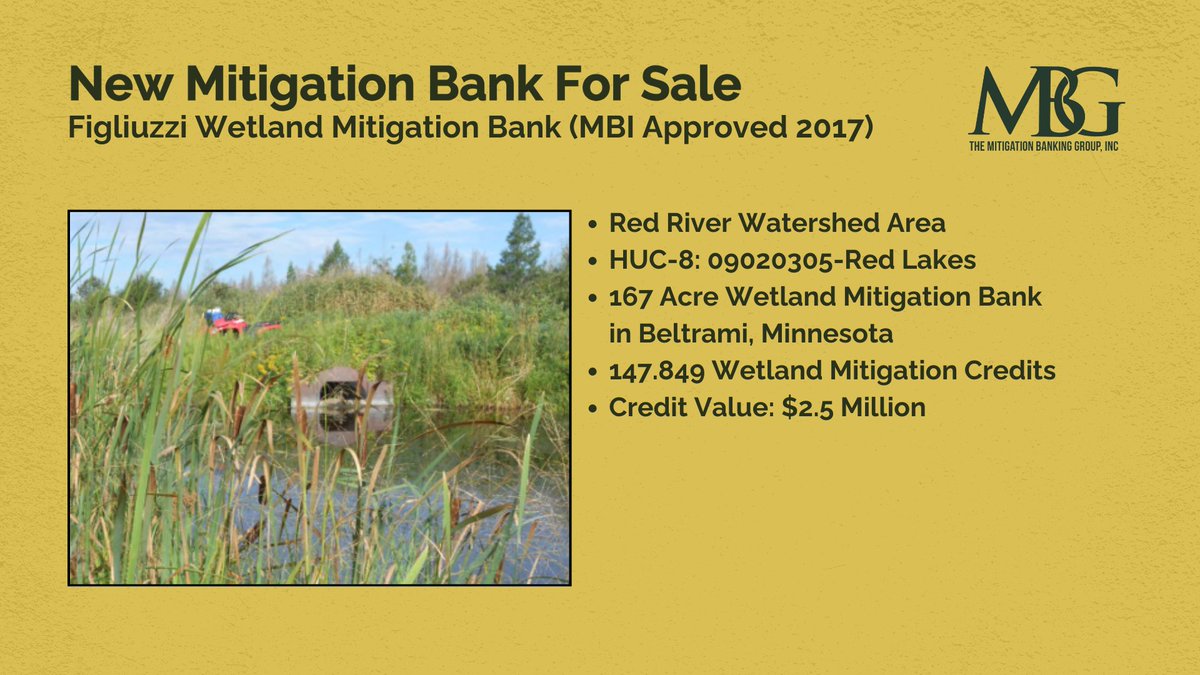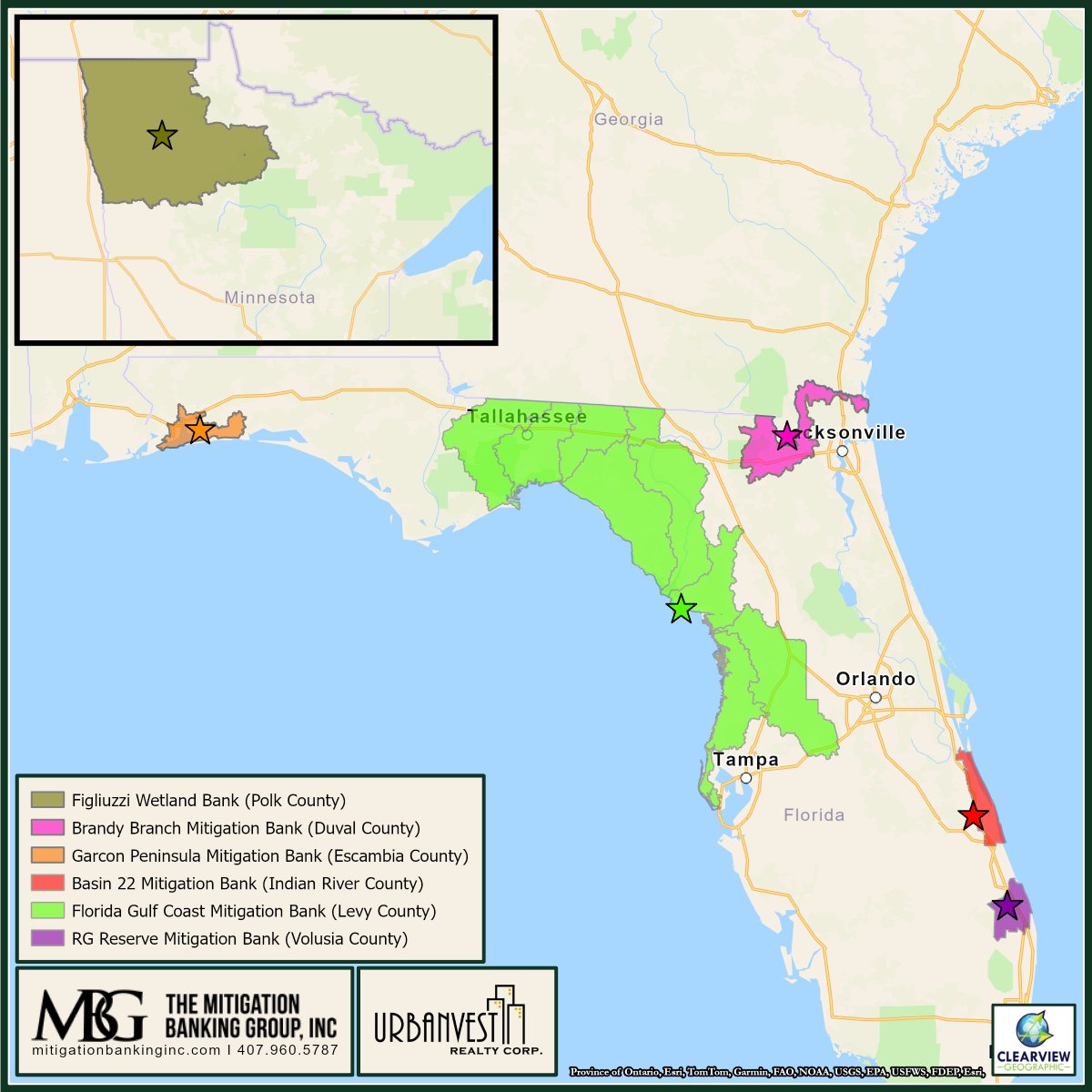The Mitigation Banking Group, Inc. markets mitigation credits throughout the state of Florida from the following mitigation banks:
Barberville Mitigation Bank
St. Johns River (Wekiva to Welaka) Basin 15
(SJRWMD & USACOE)
Colbert Cameron Mitigation Bank
St. Johns River (Canaveral Marshes to Wekiva) Basin (Basin 18), Econlockhatchee Nested Basin (Basin 19), Lake Jesup ( Basin 23), and part of the Southern St. Johns River (Basin 20)
(SJRWMD & USACOE)
Crosby Island Marsh Mitigation Bank
USACOE HUC: 03090101 and 03080101
Farmton Mitigation Bank
Halifax River Basin & St. Johns River Basin
SJRWMD (UMAM) & USACE (WRAP)
Florida Gulf Coast Mitigation Bank
Freshwater: Waccasassa River, Suwannee River Basin, Coastal Rivers & Withlacoochee River Basins (SRWMD)(FDEP & USACOE)
Saltwater: SWFWD: Upper Coastal and Withlacoochee River Basin, SRWMD: Wacassassa, Lower Suwanee, Coastal Basin and Aucilla Basin, NWFWD: St Marks River and Ochlockonee Basin
Hammock Lake Mitigation Bank
Palatlakaha River, Southern Ocklawaha River and Ocklawaha River Basins
Permitted: SWFWMD (UMAM) & USACE (UMAM)
Mangrove Point Mitigation Bank
Tampa Bay & Manatee River Basin
Permitted: SWFWMD (UMAM) & USACOE (UMAM)
Reedy Creek Mitigation Bank
Reedy Creek, Shingle Creek, Boggy Creek, Lake Hart, E. Lake Toho, Lake Toho Basins, etc…
Permitted: SFWMD (UMAM) & USACE (M-WRAP)
Twin Oaks Mitigation Bank
Reedy Creek, Shingle Creek, Boggy Creek, Lake Hart, Lake Tohopekaliga, Lake Gentry, Lake Hatchineha, and Lake Kissimmee Basins
Permitted: SFWMD (UMAM)
Webster Creek Mitigation Bank
Northern Indian River Lagoon (21) & Halifax River Basin (17)
Permitted: SJRWMD (UMAM)
